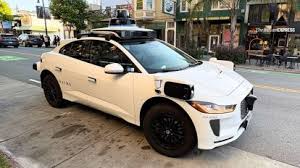I rode in a driverless Waymo in San Francisco and it was smarter than most human drivers

Technology is advancing faster than ever, and driverless cars are no longer science fiction. Recently, I rode in a driverless Waymo vehicle in San Francisco. The experience was incredible. What surprised me most was how much smarter this car was compared to most human drivers. The ride was smooth, efficient, and surprisingly intuitive. It changed how I view the future of transportation.
First Impressions of a Driverless Ride
When I stepped into the Waymo, I immediately noticed the modern design. It’s an electric car equipped with many sensors, cameras, and radar. There was no traditional driver—only a safety operator who mostly stayed quiet. The car’s cabin felt spacious and comfortable, a calm space amid the usual chaos of city traffic.
The technology was easy to use. I entered my destination on a touchscreen, and the car started driving without hesitation.
Handling San Francisco’s Tough Streets
San Francisco is known for difficult roads. There are steep hills, narrow lanes, and unpredictable pedestrians. The drivers on the road vary from cautious to reckless. Yet, Waymo handled all of this with ease. It adjusted speed carefully and predicted other vehicles and pedestrians’ moves. Its decisions felt safer than those made by many human drivers.
At one tricky intersection near Market Street, the car slowed down well ahead. It scanned the area carefully before moving forward. It didn’t rush or hesitate too much but kept a steady pace. That made me feel safe.
Waymo’s Smarter Driving Style
Waymo is more than just a rule follower. It has 360-degree awareness all the time. While human drivers can be distracted by phones or tiredness, Waymo stays focused. Its sensors spot everything—from cars far away to a child stepping off the curb.
During the ride, I noticed how patient the car was. When another driver suddenly cut in without signaling, Waymo simply slowed down calmly. It avoided any sudden moves. Many humans would react impulsively, but this car chose the safest option. That kind of calm is rare on city streets.
Waymo also drives more fairly. It doesn’t speed up to beat yellow lights or bend rules out of impatience. It consistently chooses safety over convenience. That’s a big difference from human drivers, who sometimes take risks to save time.
The Technology Behind Waymo’s Intelligence
Waymo’s smart driving comes from its hardware and software working together. It uses LiDAR sensors to build detailed 3D maps of its surroundings. High-definition cameras provide a constant visual feed. Radar measures speed and distance of nearby objects. Powerful onboard computers process all this data instantly.
Its machine learning algorithms have been trained on millions of miles of real-world driving. This helps the car predict how other road users will behave. It adapts to traffic and learns from new situations. Because of this, the car gets safer and smarter with every trip.
Waymo doesn’t just react to immediate dangers—it anticipates risks before they happen. Even the best human drivers struggle to do this consistently.
Comfort and Trust in the Ride
Despite all the tech, the ride felt very human-centered. The car’s interior was quiet, and acceleration was smooth. There were no sudden brakes or jerks. The electric motor made a gentle hum instead of loud engine noise.
Trust matters a lot with self-driving cars, and Waymo earned mine. After seeing so many careless human drivers in San Francisco, I felt safer knowing the car was always watching. It never got distracted or tired. This constant vigilance made the ride feel more secure than many trips I have taken with human drivers.
Challenges and the Road Ahead
Of course, driverless cars face challenges. Bad weather, complex construction zones, and unpredictable human behavior can still confuse autonomous systems. But Waymo keeps updating its software to handle these better.
The benefits of driverless cars are huge. They could reduce accidents caused by human error. Traffic congestion could drop with smarter driving. People who cannot drive due to age or disability could gain independence.
Conclusion: A Look at Tomorrow’s Roads
My ride in a driverless Waymo in San Francisco showed me how autonomous technology can improve road safety and comfort. The car’s awareness, calm decisions, and rule-following made it smarter than most human drivers. While challenges remain, I’m convinced driverless cars will reshape urban transport.
The future isn’t just about self-driving cars. It’s about safer, smarter roads for everyone. From my experience, Waymo is leading the way, one intelligent mile at a time.






